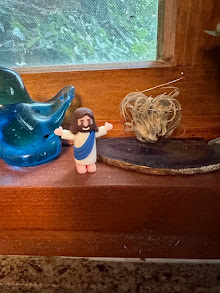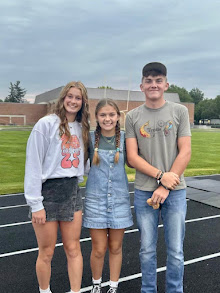Therein lies a tale....a slice of history, if you will, unadorned, unedited, and without any of the warm feelings modern poultry hobbyists and proponents of the good old days would like to pull over the cold hard facts like a cozy comforter.
Here's Millie's 2008 article about the rise and fall of pasture turkey production from one Atchison county farmer's experience back in the 1950s:
The Farmer's Wife
THIS PICTURE,
TAKEN IN 1956 - Shows 12 acres of turkeys with the same amount on the other side of the hill. Lynn
Niemann had sold 6,000 turkeys
prior to
this picture being taken. He was told that he was one of the largest tur key producers at that time.
By this time, many of
you have already
purchased your turkey
for Thanksgiving dinner. The size
of it depends on how many people there will be gathered around your table on Thanksgiving Day. You had a few things to consider when you purchased
it, besides
the size of it. What brand would
be the best tasting?
Would you buy a frozen one or a fresh one? Where
would you get the most meat for the cheapest price? Possibly other
factors not mentioned here were
considered as well. As you took it home, did you ever consider how convenient
it was to be able to find a nice fat turkey at your grocery store?
I
have visited with Charles Lynn
Niemann several different times about his experience with raising
turkeys during the 1950's.
Lynn
lived north of the Farmers City
Store. His father owned 160 acres of which 100 or
more he kept in permanent pasture. It was basically unproductive. Looking about for a method
to utilize this in a productive manner, Lynn started raising
turkeys, ranging them on this pasture land.
The first
year he
raised 200, then went to 1,000, 3,000, 5,000, and then
to 10,000. The first four years in
this business were profitable. The last year the market went to pot, thanks to several different companies entering the production, processing, and marketing phase of this business. Consequently,
the price in a controlled market did not improve, as well as other factors
beyond Lynn's control, and he, as well as many others in the business, absorbed
a huge loss and most producers and Lynn quit the business.
Lynn
related to me
that during this time of raising these turkeys,
it took several truckloads of feed a day. He did not have
an adequate supply
of water and hired Luke Mather to haul a load of water
to the turkeys every day. He eventually had a deep well dug which
helped supply water to the
turkeys but, again, at a cost.
When he quit the turkey business, Lynn had suffered close to a $60,000 loss. That was a lot of money i n the 1950's. , He said,
"It was a
time in my life not worth remembering."
I believe Millie's piece about Lynn Niemann would resonate with livestock producers attempting to convince the general population and well meaning animal advocates that reinventing the wheel when it comes to animal agriculture will come at a price. More animals will be injured or killed by predators, weather, and their cohorts in pastures and pens. Prices will be more volatile and costs will increase. That is a pattern centuries old. Only time will tell whether the innovators at Blake's meeting will produce breakthroughs that change the food system for the better. But rehashing methods older than our grand and great-grand parents used is surely not the answer....

















No comments:
Post a Comment